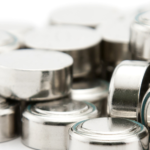Whether you are talking about something as simple as a window on a house or car or something more complex, like an air conditioning system, ventilation plays a role in our everyday lives. Proper ventilation is not only a must for providing extra comfort, but it also can be a critical safety measure.
The same holds true for many electronic and electrical device enclosures, which often need to be designed with vents by electronic enclosure manufacturers to mitigate the effects of the significant heat that these devices can generate. If you’re not certain whether you need an electrical enclosure with vents, here is a guide to help you make the best choice for your project.
Are the Device Components Inside your Electrical Enclosure Capable of Generating Substantial Amounts of Heat?
If so, the answer is yes, you will likely need a ventilated electrical enclosure to help protect the device components from getting overheated and potentially becoming dangerous. For large devices that will generate high levels of heat, your best bet is to consult with an electrical enclosure manufacturer about building a customized mechanical ventilation solution geared specifically toward that device and enclosure.
How can I find out if my electrical enclosure should be vented?
If you’re unsure whether your device requires a vented electrical enclosure, the first thing you need to do is measure the level of heat that will rise inside during use. You can do this by using a sealed enclosure temperature rise graph to determine the level of temperature increase based on your device’s input power. Be sure to consult with your electrical enclosure manufacturer, as well as the manufacturing staff for the device itself for a more detailed, expert assessment of your device’s ventilation needs.
Are There Different Ventilation Measures for Electrical Enclosures?
Yes—when it comes to enclosure ventilation, there are two main types: passive ventilation and forced air ventilation.
Passive ventilation uses non-mechanical enclosure design elements, such as slats or holes cut into the enclosure, to cool the components, alleviate pressure and dissipate heat. These elements are typically used in smaller device enclosures.
More commonly required for large electrical devices with high input power, forced air ventilation uses mechanical elements like blower fans to circulate and cool the air in the device enclosure.
Either ventilation method may be used in conjunction with the other: for example, an electrical enclosure for a large, high-power device will almost certainly rely on forced air ventilation but may also contain ventilation holes in its design.
Contact an Expert for Custom Electrical Enclosures
Understanding the need for ventilation in some electrical devices can help you determine whether you will need a vented electrical enclosure. As always, ask your electrical enclosure manufacturer for their expert recommendation when planning your project.




